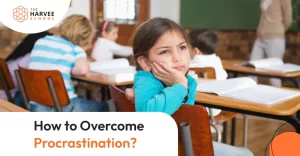20 Easy Science Experiments To Do At Home
Science experiments can be a fun and educational way to engage kids of all ages. Whether you’re looking for science experiments for kids, science experiments for elementary students, or even fun activities for preschoolers, there are countless easy and exciting ways to learn through hands-on experimentation. Here’s a list of 20 simple and enjoyable science experiments that are perfect for kids to do at home.
1. Baking Soda and Vinegar Volcano
Concept: Chemical reactions
What you need:
- Baking soda
- Vinegar
- A small bottle or container
- A tray or bowl to catch the overflow
Steps:
- Place the small bottle on the tray.
- Fill it about halfway with baking soda.
- Pour some vinegar into the bottle.
- Watch as the mixture fizzes and erupts!
Explanation: When baking soda (a base) reacts with vinegar (an acid), carbon dioxide gas is produced, leading to fizzing and an eruption.
2. DIY Lava Lamp
Concept: Density and chemical reactions
What you need:
- A clear bottle
- Vegetable oil
- Water
- Food coloring
- Alka-Seltzer tablet
Steps:
- Fill the bottle about two-thirds with vegetable oil.
- Crush an Alka-Seltzer tablet into smaller pieces and drop one into the bottle.
- Add a few drops of food coloring.
- Break an Alka-Seltzer tablet into pieces and drop one into the bottle.
- Watch as the bubbles move up and down!
Explanation: The oil and water do not mix due to their different densities. The Alka-Seltzer creates carbon dioxide gas, which moves the colored water up, creating the “lava” effect.
3. Magic Milk Experiment
Concept: Surface tension and chemical reactions
What you need:
- Milk
- Food coloring
- Dish soap
- A shallow plate
Steps:
- Pour milk into a shallow plate until it covers the bottom.
- Place drops of various food coloring around the milk.
- Then, dip a cotton swab into dish soap and gently touch it to the center of the milk.
- Watch as the colors move and swirl!
Explanation: The dish soap breaks the surface tension of the milk and reacts with the fat molecules, causing the food coloring to swirl in a beautiful, colorful display.
4. Growing Crystals
Concept: Crystallization
What you need:
- Salt or sugar
- Warm water
- A glass jar
- A spoon
Steps:
- Heat water until it’s warm but not boiling.
- Stir in salt or sugar, one spoonful at a time, until no more will dissolve in the water.
- Pour the solution into a jar.
- Place the jar in a safe, undisturbed location and check it after a few days.
- Watch as crystals begin to form!
Explanation: As the water evaporates, the dissolved salt or sugar comes out of solution and forms solid crystals.
5. Invisible Ink
Concept: Chemical reactions
What you need:
- Lemon juice or baking soda solution
- Cotton swabs
- White paper
- A lamp or heat source
Steps:
- Submerge a cotton swab in lemon juice or a baking soda solution.
- Write a secret message on a piece of white paper.
- Let the paper dry.
- Hold the paper under a heat source (like a lamp) to reveal the invisible ink!
Explanation: The heat causes the lemon juice to oxidize, making it visible, or it activates a chemical reaction with baking soda, revealing the writing.
6. Walking Water
Concept: Capillary action
What you need:
- 3 clear cups
- Water
- Food coloring
- Paper towels
Steps:
- Fill two of the cups with water and add food coloring to each.
- Position an empty cup between the two colored cups.
- Fold paper towels into strips and place one end of each towel into the colored water and the other end into the empty cup.
- Observe as the water “crawls” along the paper towel and fills the empty cup!
Explanation: This happens because of capillary action, where water moves through small spaces, like the fibers of the paper towel, from one cup to another.
7. The Balloon Rocket
Concept: Newton’s Third Law of Motion
What you need:
- A balloon
- A straw
- String
- Tape
Steps:
- Thread a long piece of string through the straw and tie the string between two objects.
- Inflate a balloon and tape it to the straw without tying the end.
- Release the balloon and watch it zoom across the string!
Explanation: As air escapes from the balloon, it pushes the balloon in the opposite direction, illustrating Newton’s Third Law of Motion.
8. Rainbow in a Jar
Concept: Density
What you need:
- Honey
- Dish soap
- Water
- Vegetable oil
- Rubbing alcohol
- Food coloring
- A clear jar
Steps:
- Pour honey into the bottom of the jar.
- Carefully add dish soap on top of the honey.
- Add colored water above the soap, followed by vegetable oil and rubbing alcohol.
- Watch as the liquids form separate layers!
Explanation: The liquids have different densities, which causes them to separate into layers.
9. Dancing Raisins
Concept: Buoyancy and gas bubbles
What you need:
- A clear glass
- Carbonated water (or soda)
- A few raisins
Steps:
- Fill a glass with carbonated water.
- Drop a few raisins into the glass.
- Watch as the raisins “dance” up and down!
Explanation: The carbon dioxide bubbles cling to the raisins, making them float.
When the bubbles burst, the raisins sink back down.
10. Static Electricity Butterfly
Concept: Static electricity
What you need:
- A balloon
- Tissue paper or lightweight paper
- Scissors
Steps:
- Cut a butterfly shape out of tissue paper.
- Rub the balloon against your hair to generate static electricity.
- Hold the balloon near the butterfly and watch it lift and flap!
Explanation: Rubbing the balloon creates static electricity, which attracts the paper butterfly.
11. Water Tension and Soap
Concept: Surface tension
What you need:
- Water
- Dish soap
- A shallow dish
Steps:
- Fill a shallow dish with water.
- Place a drop of dish soap on the surface of the water.
- Watch as the water moves away from the soap!
Explanation: The soap breaks the surface tension of the water, causing the water molecules to spread apart.
12. Cabbage pH Indicator
Concept: pH levels
What you need:
- Red cabbage
- Hot water
- A cup
- Various liquids (vinegar, baking soda solution, lemon juice, etc.)
Steps:
- Cut a few leaves of red cabbage and place them in hot water.
- Strain out the cabbage, leaving only the purple liquid.
- Test different liquids by adding the cabbage juice to them and observing the color change!
Explanation: The cabbage juice changes color depending on whether the liquid is acidic or basic.
13. Fizzy Balloon
Concept: Chemical reactions
What you need:
- Baking soda
- Vinegar
- A balloon
- A plastic bottle
Steps:
- Place a few tablespoons of baking soda into a balloon.
- Fill a plastic bottle with vinegar.
- Stretch the balloon’s opening over the neck of the bottle, without letting the baking soda fall in.
- Lift the balloon to let the baking soda fall into the vinegar.
- Watch the balloon inflate!
Explanation: When baking soda reacts with vinegar, it produces carbon dioxide gas, which inflates the balloon.
14. Simple Magnets
Concept: Magnetism
What you need:
- A magnet
- Paperclips
- A piece of string
Steps:
- Attach a paperclip to a string.
- Hold the magnet near the paperclip and watch it move!
Explanation: Magnets attract metals like iron, causing the paperclip to move.
15. Oobleck (Non-Newtonian Fluid)
Concept: States of matter
What you need:
- Cornstarch
- Water
- A bowl
Steps:
- Mix cornstarch and water in a bowl until it has the consistency of thick mud.
- Try to squeeze it in your hand, then let it sit.
- Observe how it behaves like a solid when squeezed and like a liquid when released!
Explanation: Oobleck is a non-Newtonian fluid, which means it behaves differently depending on how fast pressure is applied.
16. Ice Fishing
Concept: Freezing point depression
What you need:
- A bowl of ice
- String
- Salt
Steps:
- Place a string on a block of ice.
- Sprinkle salt on the ice and wait.
- Watch as the string becomes frozen into the ice!
Explanation: The salt lowers the freezing point of the ice, causing it to freeze more tightly around the string.
17. Balloon Hovercraft
Concept: Air pressure
What you need:
- A CD
- A bottle cap (with a hole)
- A balloon
- Glue
Steps:
- Attach the bottle cap to the center of the CD using glue.
- Inflate the balloon and stretch the opening over the bottle cap.
- Release the balloon and watch the CD hover!
Explanation: The air from the balloon creates pressure under the CD, causing it to hover.
18. Potato Battery
Concept: Electricity
What you need:
- A potato
- Copper wire
- Zinc nail
- A small LED light
Steps:
- Insert the zinc nail and copper wire into the potato.
- Connect the copper wire to the positive terminal of the LED and the zinc nail to the negative terminal.
- Watch the LED light up!
Explanation: The potato creates a chemical reaction between the zinc and copper, generating electricity.
19. Making a Sundial
Concept: Solar energy
What you need:
- A cardboard or paper plate
- A pencil or straw
- Markers
Steps:
- Place the pencil or straw in the center of the plate.
- Use the sun’s shadow to mark the time on the plate.
- Use the sundial to tell the time!
Explanation: The position of the sun casts a shadow on the sundial, indicating the time of day.
20. Mentos and Soda Explosion
Concept: Chemical reaction
What you need:
- Mentos candy
- A bottle of soda (preferably diet)
Steps:
- Open the soda bottle.
- Drop a few Mentos candies into the bottle at once.
- Step back and watch the eruption!
Explanation: The Mentos cause rapid CO2 bubbles to form, creating a dramatic soda geyser.
These science experiments are fun, simple, and educational, making them perfect for kids of all ages. Whether you’re doing science experiments for kids, fun activities for preschoolers, or science fair ideas for kindergarten students, these activities will develop creativity and curiosity while teaching valuable lessons about science. Happy experimenting!






